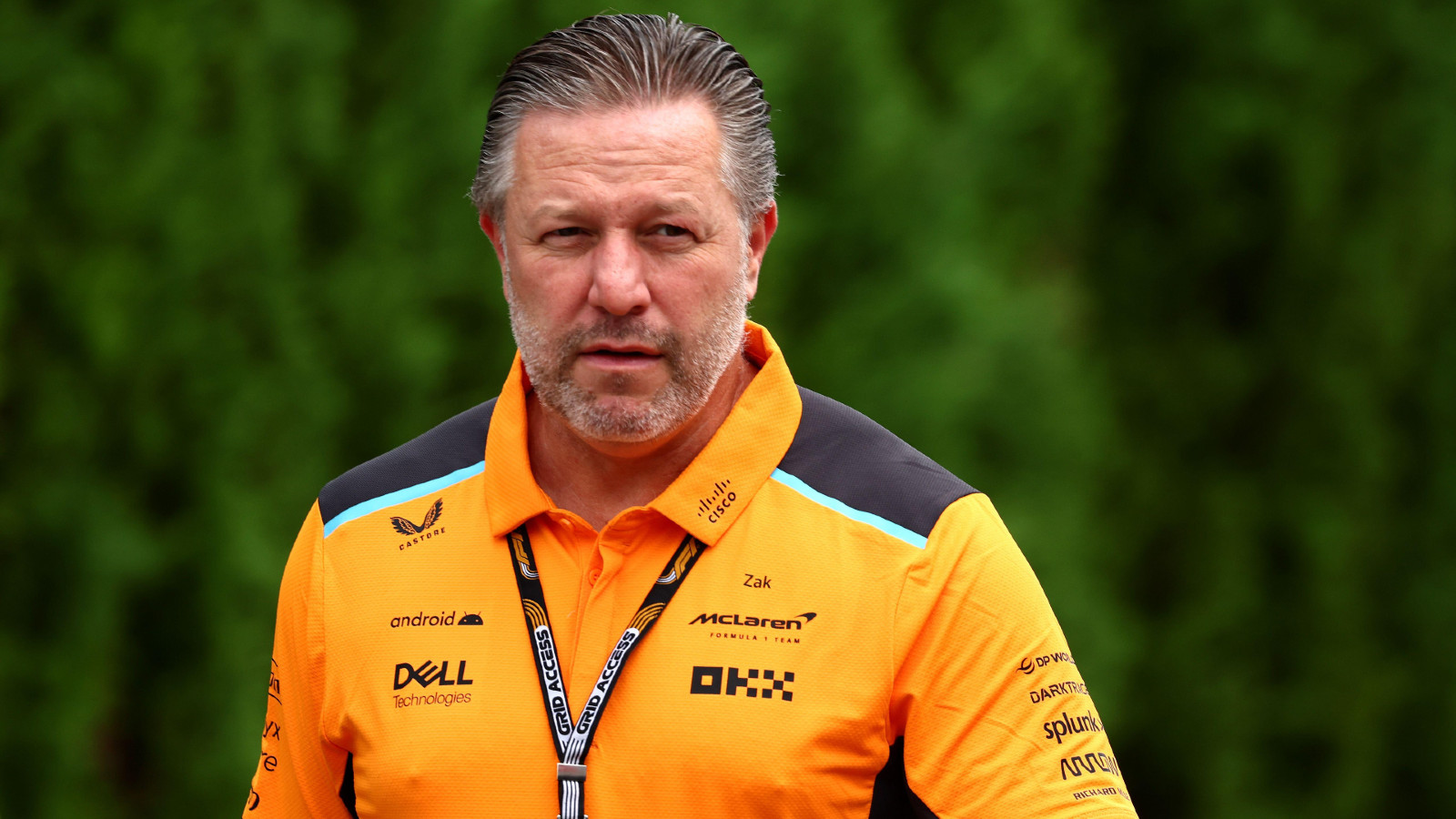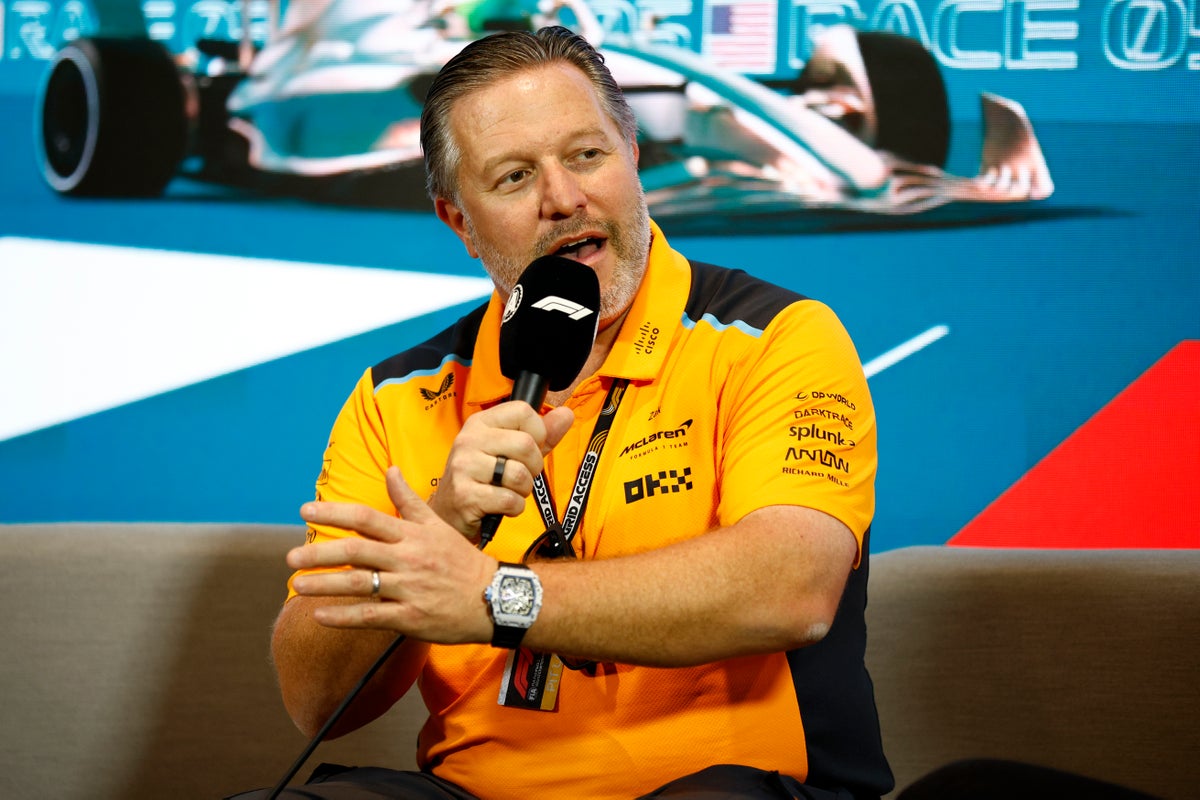In the spring of 2020, as the world retreated into lockdown, the high-octane world of Formula 1 fell silent. The roar of engines was replaced by an unnerving quiet, and the glitz of the Grand Prix circuit gave way to the grim reality of a global pandemic. For a sport built on speed, glamour, and a relentless forward momentum, the sudden stop was a shock to the system. But for Zak Brown, the charismatic CEO of McLaren Racing, this unprecedented crisis was more than just a threat—it was a once-in-a-generation opportunity to reshape the very foundations of Formula 1.

The COVID-19 pandemic didn’t just postpone races; it exposed the deep financial frailties that had long plagued the sport. With no races, there was no television revenue, no sponsorship activations, and no ticket sales. For independent teams like McLaren, who lacked the colossal backing of a major car manufacturer, the situation was dire. The financial model, already stretched to its limits by a spending arms race, was on the brink of collapse. It was a moment of existential dread, a time when the survival of some of the most historic names in motorsport was genuinely in question.
For years, the idea of a budget cap in Formula 1 had been a contentious issue. The top teams—Mercedes, Ferrari, and Red Bull—had budgets that dwarfed those of the midfield, creating a two-tiered system that made true competition all but impossible. The smaller teams argued for a level playing field, but their pleas were often dismissed by the sport’s behemoths, who saw their financial might as a key competitive advantage. The debate was stuck in a perpetual stalemate, a tug-of-war between the haves and the have-nots.
But as the pandemic tightened its grip, the dynamic began to shift. The crisis was no longer an abstract threat; it was a clear and present danger to every team on the grid. Even the giants of the sport were feeling the pinch, and the argument for financial sustainability suddenly became a matter of collective survival. This was the moment Zak Brown had been waiting for. With a unique blend of American salesmanship and a genuine passion for motorsport, he seized the opportunity to become the unlikely champion of a cause that would redefine the future of Formula 1.

Brown’s position as the head of McLaren gave him a unique platform. McLaren was a team with a storied history, a name that commanded respect, but it was also a team that was vulnerable. Unlike the manufacturer-backed teams, McLaren’s survival depended on its ability to be commercially successful and competitive. This vulnerability became Brown’s greatest strength. When he spoke about the need for a budget cap, it wasn’t just a political maneuver; it was a genuine plea for the long-term health of the sport. He framed the issue not as a matter of fairness, but as a fundamental necessity to keep 10 teams on the grid.
The negotiations that followed were intense and often acrimonious. The big teams, accustomed to their financial dominance, pushed back hard. They argued for exceptions and allowances, for a cap that would still allow them to maintain their advantage. But Brown was relentless. He understood that a watered-down budget cap would be a token gesture, a temporary fix for a systemic problem. He pushed for a stricter, more enforceable cap, one that would genuinely narrow the gap between the front of the grid and the midfield.
His approach was both strategic and deeply personal. He built alliances with other team principals who shared his vision, and he wasn’t afraid to use the media to make his case. He spoke with a sense of urgency, painting a stark picture of a future where iconic teams could disappear, where the sport itself could become a shadow of its former self. He argued that a more competitive, unpredictable Formula 1 would be a better product for the fans, a more attractive proposition for sponsors, and a more sustainable business for everyone involved.
The breakthrough came when the initial proposal of a $175 million cap was revised downwards. As the financial reality of the pandemic set in, even the most resistant teams began to see the logic in Brown’s arguments. The final agreement, a cap of $145 million for the 2021 season, with further reductions in the following years, was a landmark achievement. It was a compromise, to be sure, but it was a compromise that fundamentally altered the financial landscape of Formula 1.

The implementation of the budget cap was not without its challenges. There were debates over what should be included, how it should be policed, and what the penalties for breaches should be. Brown remained a vocal advocate for strict enforcement, arguing that the integrity of the cap was paramount. He knew that any loopholes or inconsistencies would undermine the entire project, allowing the big teams to once again outspend their rivals into submission.
The early effects of the budget cap have been promising. The gap between the front-runners and the midfield has narrowed, leading to more exciting and unpredictable racing. Teams are now forced to be more efficient, to innovate not just on the track but in their financial strategies. The era of unchecked spending is over, replaced by a new focus on smart, sustainable growth.
Zak Brown’s role in this transformation cannot be overstated. At a moment of profound crisis, he provided the leadership and vision that the sport desperately needed. He was a catalyst for change, a driving force behind a revolution that has made Formula 1 more competitive, more sustainable, and ultimately, more exciting. He didn’t just save McLaren; he helped to save the sport he loves. The roar of the engines has returned, but it’s a different sound now—the sound of a healthier, more vibrant, and more competitive Formula 1, a sport with a future that is brighter and more secure, thanks in no small part to the man who saw an opportunity in the midst of a crisis.
News
Die Welt hat sich weitergedreht: Marie Fredriksson rechnet leise ab – 5 Stars, die sie im Stich ließen.
Der Klang von Roxette war der Soundtrack einer ganzen Generation. Mit Hits wie „It Must Have Been Love“ und „The…
Conny Froboess: Die bittere Wahrheit hinter der Traumkarriere – Im Alter trägt sie eine unheilbare Wunde.
Der Name Conny Froboess ist in Deutschland untrennbar mit einem Gefühl von Leichtigkeit und sonnigen Kindertagen verbunden. Wenn ihr größter…
DER WACKELDACKEL DER REPUBLIK: WIE MERZ’ „HERBST DER REFORMEN“ IN EINER EISZEIT DER STARRE ENDETE UND UNSERE ZUKUNFT VERPFÄNDET WIRD
Einbruch in die politische Wirklichkeit: Die bittere Bilanz nach dem Versprechen des Aufbruchs Mit großen Versprechungen begann die Zeit, die…
Bommes’ Nerven liegen blank: Unerwarteter Eklat in der letzten Folge von „Gefragt – Gejagt“ schockt die Fans
Ein Augenblick, der das harmonische Ende einer Quiz-Saison sprengte. Ausgerechnet in der vorerst letzten Ausgabe der erfolgreichen ARD-Show „Gefragt –…
Herzschlag-Finale in der Scheune: Friedrich und Laura trotzen dem TV-Kitsch mit dem ehrlichsten Liebesbeweis der Staffel
Der leise Moment, der lauter spricht als jede große Inszenierung Es war der Moment, auf den Millionen von Zuschauern der…
Kai Pflaume bricht sein Schweigen: Das 30-Jahre-Geheimnis hinter Deutschlands Vorzeige-Ehe und warum seine Ilke sein wichtigstes Korrektiv ist
Die deutsche Fernsehlandschaft hat viele Gesichter, aber nur wenige sind so konstant, so sympathisch und so untrennbar mit dem Gefühl…
End of content
No more pages to load












